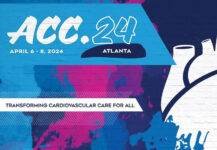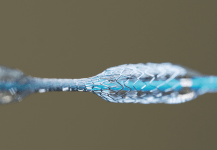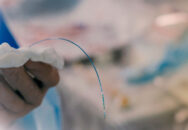Patients with peripheral vascular disease often experience femoropopliteal compromise. It is estimated that approximately 50% of lesions in this area are chronic total occlusions (CTO). Even though success rate has improved for peripheral CTO treatments, long term clinical and technical outcomes have not been fully determined yet. Prior research has looked into stenting outcomes in…
Peripheral Vascular Disease: Our Reality in Latin America, with the LATAM SOLACI Peripheral Registry
On the one hand, chronic peripheral vascular disease is on the rise. On the other, over the past 20 years, percutaneous coronary intervention (PCI) has gained considerable ground thanks to various new devices, replacing surgery as an alternative in most scenarios. Both strategies have shown similar results, but PCI has fewer complications and shorter hospital stays.…
ACC 2024 | IVUS-DCB
Drug-coated balloons (DCB) have proven to be effective in the treatment of femoropopliteal pathology, although they entail complications such as recoil, residual stenosis, and dissection. Their outcomes could be improved through proper and enhanced vessel preparation, both before and after the procedure. Intravascular ultrasound (IVUS) offers the advantage of characterizing plaque and assessing vessel diameter.…
IN.PACT Outcomes at 5 Years
Over time, percutaneous coronary intervention (PCI) with drug coated balloons (DCB) have been shown more beneficial than conventional PCI. However, in many cases, stenting is required to treat suboptimal results. Even though several studies have looked into this scenario, long term durability still calls for research. This was a 5 year thorough analysis of the…
Treatment of Femoropopliteal Lesions with Low-Dose vs. High-Dose Drug-Coated Balloons
The use of drug-covered balloons (DCBs) has increased significantly for the endovascular treatment of femoropopliteal arterial disease. Previous studies on first-generation high-dose DCB (HD-DCB) have validated its benefits, thus supporting its recommendation in current clinical guidelines. However, there have been reports of adverse effects associated with paclitaxel and its excipients. Second-generation, lower-dose DCBs (LD-DCB) have…
Low vs High Dose Drug Coated Balloons in Femoropopliteal Territory
The use of drub coated balloons (DCB) in the treatment of femoropopliteal artery disease has grown. Studies on first generation high dose DCB (HD-DCB) have shown benefits, which has led to their recommendation by current guidelines. However, there have been reports of secondary effects caused by paclitaxel and its excipients. Second generation low dose DCB…
Device Effectiveness for Femoropopliteal Artery Disease Treatment: Analysis of K-VIS ELLA Registry
Endovascular treatment of lesions in femoropopliteal territory (FPA) has become the main therapeutic option, seeing as it is less invasive and has faster recovery. It has used different devices, such as conventional bare metal stents (BMS), balloon angioplasty (POBA), and drug coated balloons (DCB), as well as drug eluting stents (DES). However, real world data…
Drug Coated Balloons: Link between Femoropopliteal Lesion Calcification Grade and Clinical Outcomes
At present, the use of drug coated balloons (DCB) in femoropopliteal territory is more and more frequent. However, when it comes to treating moderate to severe calcification, the evidence is still limited. Using a peripheral artery calcification scoring system (PACSS) has been associated to clinical outcomes after DCB angioplasty for femoropopliteal lesions. The system categorizes…
Retrograde Tibial Access for Endovascular Treatment of Femoropopliteal Occlusions: Is it a Safe Strategy?
Endovascular recanalization of femoropopliteal occlusions continues to be one of the initial therapeutic strategies to treat this pathology. The anterograde approach via the common femoral is the most frequently used. However, it is not always viable, especially in long occlusions with severe calcification or when the femoral artery cannot be reached. In these cases, the…
Deep Vein Arterialization: Have We Conquered “Non-Revascularizable” Critical Limb Ischemia?
Deep vein Arterialization in patients with critical “non-revascularizable” limb ischemia. We are familiar with the poor quality of life and elevated mortality of patients with chronic limb-threatening ischemia (CLTI). In its last stages (nearly terminal), revascularization (either surgical or endovascular) has been shown to reduce amputation incidence. However, similarly to heart disease and other vascular scenarios,…
Relationship Between Medical Treatment and Long-Term Clinical Results after Peripheral Vascular Intervention
Peripheral arterial disease (PAD) is one of the consequences of atherosclerosis, and it can cause pain in the limbs or tissue loss. Its treatment includes lifestyle changes such as exercise, statin therapy, antiplatelet therapy, antihypertensive medication (mainly ACE inhibitors or ARBs), and revascularization strategy. One in five patients with PAD will have experienced acute myocardial…









